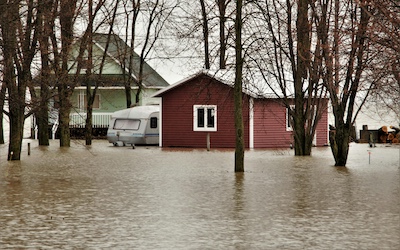
Linkages between riverine flooding risk and economic damage over the continental United States
A. Cisneros-Pineda, J. Liu, D. Grogan, and T. Hertel
Nat. Hazards (22 February 2024)
Economic damages from riverine flooding are expected to grow because of climate change. Yet, there are few studies analyzing flooding damages in the USA that clearly measure the roles of hazard, exposure, and vulnerability separately and locally. A lack of this knowledge prohibits spatially detailed predictions of future damages. By being able to separate into these three risk factors, we provide all necessary inputs for uncertainty analysis of the flooding damages forecasts that can incorporate new predictive scenarios for each component. To analyze the flooding risk factors of non-coastal counties within the contiguous USA between 1999 and 2018, we gathered information on (1) property and human damages from flooding, (2) maximum annual river discharge, (3) the number of housing units and the years in which they were built, and (4) the incidence of flooding events. We used the method of trimmed least absolute deviated and trimmed least square estimators to obtain the individual impact of hazard, exposure, and vulnerability in the context of censored flooding damages for panel data. The resulting estimates indicate that exposure has been the main driver of flooding risk for most counties in the USA. We use these estimates to describe the main source of flooding risk for non-coastal counties for the 1999–2018 period.